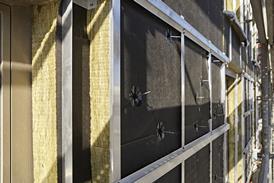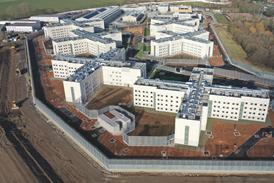The project team has described the design and construction programme, which has taken just under two years, as "fast track".
Andrew Boyle, of project manager and QS Bucknall Austin, said the team had been under pressure.
"It's been a tight programme. Back in August 2002 we only really had some sketches. We fast-tracked the design so it was always one step ahead of construction. It could have gone very badly but it hasn't."
Boyle added that design for the fountain had changed dramatically since landscape architect Gustafson Porter won the The Royal Parks' design competition in July 2002.
He said: "It was a lot less defined at the beginning. The granite quantity increased and we added special features on the fountain and surface treatment on the granite."
The fountain itself is made up of 545 slabs of De Lank granite extracted from the Ennstone Breedon quarry in Cornwall. Cathedral Works Organisation, the stone masonry subsidiary of main contractor Geoffrey Osborne, oversaw the quarrying process.
The team created a 3D model of the whole fountain and individual computer files for each slab. The granite blocks were then individually cut and shaped in Kilkeel, Northern Ireland by stone mason S McConnell. The computer technology used for the cutting had never been used in the stone industry before, Boyle said.
Water for the fountain is pumped into a 17,500 gallon tank then flows down two granite channels on either side of a 79 × 46 m grassy oval. The stones are perforated with holes to create water jets.
Representing different sides of Diana's life, the water in the western slope gently bubbles, while it bounces and swirls on the eastern side. Both channels empty into a tranquil pool.
Boyle said: "Everyone is extremely happy with the result. The fountain undulates and moves and has a surface texture to it."
The project team included Arup as engineer and planning superviser, and Ocmis, which designed the water mechanics.

























No comments yet